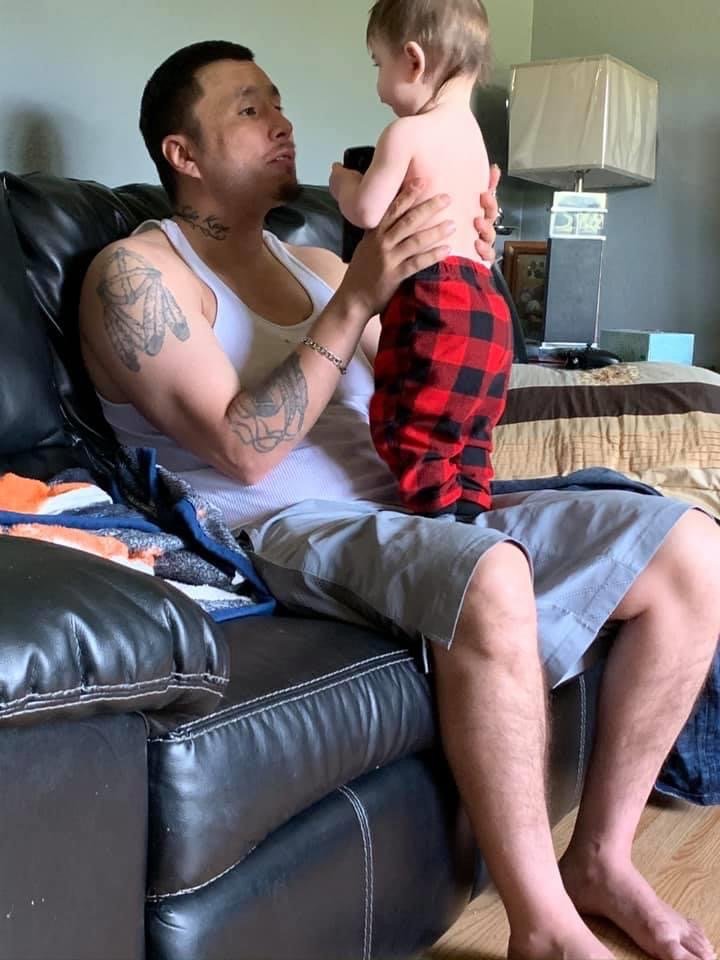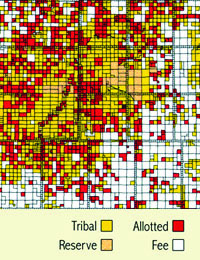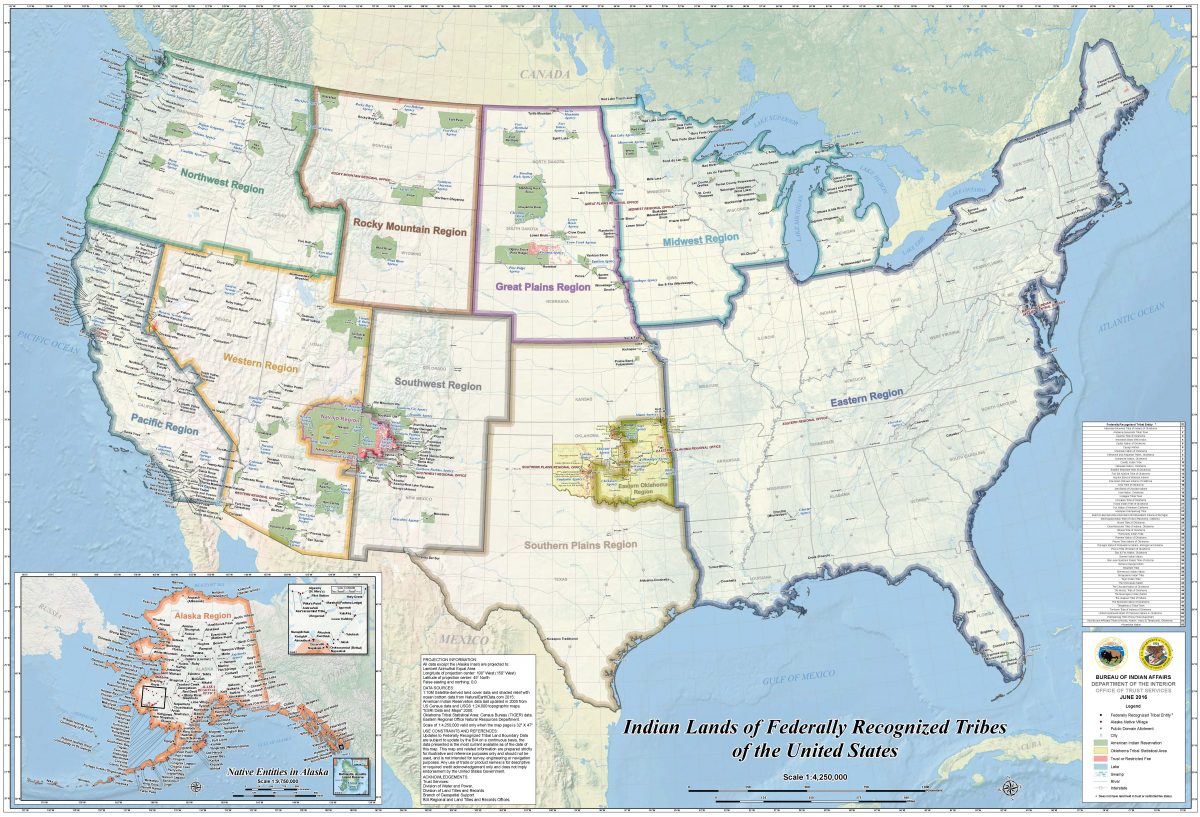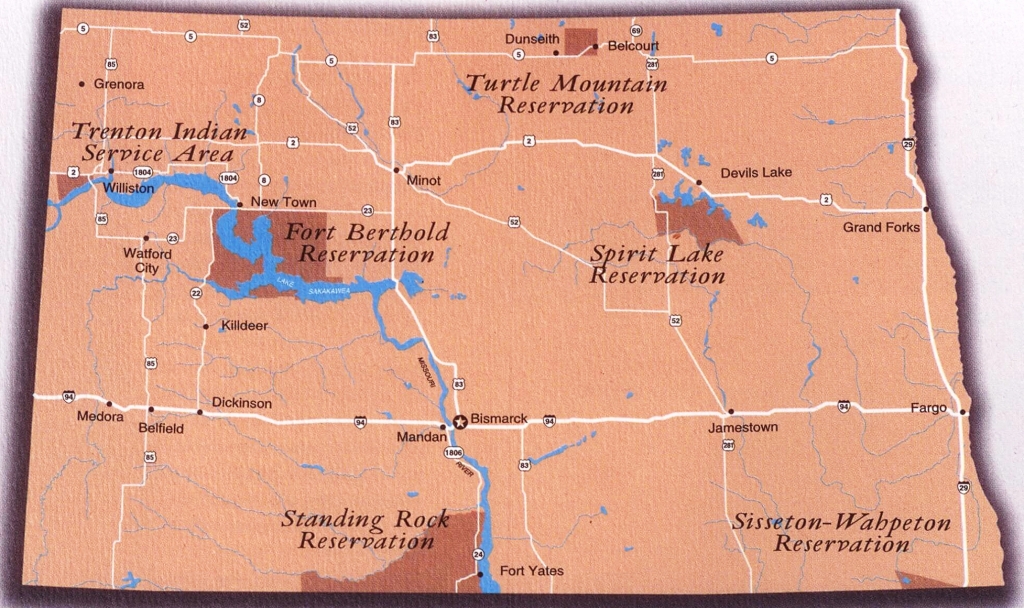Tribal Member Killed, BIA Officer Suspended, Family Knows Nothing on Turtle Mountain Indian Reservation
Belcourt, ND – On Sunday, August 23, a Turtle Mountain Chippewa man was shot and killed by police in Belcourt, North Dakota on the Turtle Mountain Indian Reservation, according to a statement made by the Federal Bureau of Investigation (FBI). Law enforcement is currently providing little details about the shooting at a private residence.
The deceased is Brandon Laducer, 35, of Belcourt, North Dakota. He was a father to two children, a boy and a girl.
In an email, FBI spokesperson Kevin Smith shared that police were involved in a shooting at a home in Belcourt, North Dakota late Saturday night, August 22 and into the early morning hours of Sunday, August 23.
The FBI was called to respond to the shooting, and the North Dakota Bureau of Criminal Investigation assisted with processing the scene, according to the email.
The FBI reported the law enforcement agencies involved in the incident were the Bureau of Indian Affairs (BIA), the Rolette County Sheriff’s Office, the Rolette Police Department and the Rolla Police Department.
Phone calls to the Rolette County Sheriff’s Department, the Rolette Police Department, and the Rolla Police Department were met with script-like responses of “that’s tribal”, leading to this reporter calling the Turtle Mountain Chippewa Tribal Office. Over the phone, a receptionist shared the phone number for the Bureau of Indian Affairs Turtle Mountain Agency and the BIA stated over the phone that any questions should be directed to the FBI field office in Minneapolis, Minnesota, nearly 500 miles away.
When asked for more information about the incident, FBI spokesperson Kevin Smith said the incident was “a shooting while officers were present” and “the circumstances of the shooting (the who, what, when, where and why) are all part of the investigation.” No other information is being shared with the public.

Police interactions in Indian Country are complicated for many reasons. Jurisdiction in Indian Country varies from reservation to reservation, and state to state, for various reasons.
In order to understand the complications of jurisdiction in Indian Country, what an Indian reservation is must be discussed as well as where the Indian reservation is and, furthermore, where on the reservation a crime was committed and who committed the crime.
Simply put, Indian reservations are permanent homelands for American Indians, initially established through treaties throughout the 1700’s and 1800’s between tribal nations and the United States federal government.
Through treaties, tribal nations ceded vast territories of land to the U.S. in exchange for promises of protection and support, while reserving the right to occupy and inhabit smaller land bases, hence the term “reservation” (as in a reservation of rights).
By the late 1880s, the federal government sought to reduce Indian reservation land bases along with its treaty obligations and Congress passed the General Allotment Act of 1887, also known as the Dawes Act.
In an effort to continue to steal land, the Dawes Act called for communally-held reservation lands to be allotted into 64-acre parcels assigned to individual members of the tribe, which resulted in the loss of more than 90 million acres of land and created a patchwork of land tenure on reservations.
The lands remaining after allotment were opened up for non-Native settlement and a formula was created where acreage of land would exceed members of each Indian reservation, creating what would be known as “surplus lands.”
As a result, reservations became blended with Native and non-Native landowners, government and private lands creating a mix of jurisdictional authority collectively known throughout Indian Country as a “checker-board” reservation.
This “checker-board” reference to land is important, because it dictates law enforcement authority. Either the tribe and the federal government, or the tribe and the state government, has authority over a given parcel.

In 1953, in an effort to reduce its financial and administrative obligations in Indian Country, Congress sought to transfer the federal government’s civil and criminal jurisdictional responsibilities over individual actions to the states and passed Public Law 280 (PL280), which is a federal statute. It enabled six mandatory states—Alaska, California, Minnesota, Nebraska, Oregon, and Wisconsin—to assume criminal and civil jurisdiction in matters involving American Indians on reservation land.
Prior to the enactment of PL280, these matters were dealt with in either tribal and/or federal court.
In 1968, Congress passed an amendment to Public Law 280 which authorized non-mandatory states to assume civil and/or criminal jurisdiction over Indian Country within its borders. The amendment also required that tribes consent to the imposition of such state jurisdiction.
Since the amendment was passed, Arizona, Florida, Idaho, Iowa, Montana, North Dakota, South Dakota, Utah, and Washington have assumed some jurisdiction over crimes committed by tribal members on reservation land.
No tribe has consented to state authority over its lands. Yet this change has significantly altered the division of legal authority among tribal, federal, and state governments, making navigating through criminal cases often very complex.

In various states, local police, tribal police, BIA police, and the FBI are the agencies who enforce the laws of tribes, states, and the federal government. However, Public Law 280 added that tribes cannot put non-natives on trial, even when crime occurs on reservation land.
Before PL280, the federal government and tribal courts shared jurisdiction over most civil and criminal matters involving American Indians in Indian Country. The states had no jurisdiction. PL280 authorized state criminal jurisdiction over reservation Indians for offenses involving Native perpetrators and/or victims.
Because North Dakota is considered a non-mandatory state, the federal government ultimately has authority and in this situation, the jurisdiction in an officer involved shooting belongs to the FBI. Because the FBI is involved, the actions of any participating law enforcement agencies are not permitted to share any information with the public, including the Turtle Mountain Chippewa Tribe.
Major felonies involving an Indian, whether as victim or accused, are matters for federal prosecution.

“I don’t know all of the circumstances, but I was informed that the FBI was called immediately,” said Turtle Mountain Chippewa Tribal Chairman Jamie Azure in an email. “What we’re curious about is which officers were involved because some of them are Native, too.”
“One of our own is no longer with us, and that is a tragedy,” added Azure. “Many lives are affected in our community.”
As of Monday evening, KFYRTV Fox West Dakota reported that a BIA Office of Justice Services officer is on administrative leave pending the investigation, according to a spokesperson with the BIA.
Further details, including the officer’s identity, are not being released at this time.
“If there is justice to be served, we should definitely pursue it,” said Stephanie Laducer, an aunt of Brandon Laducer. “Nothing is being shared with the family since the FBI has been involved, which makes us left completely in the dark.”
Brandon Laducer’s mother was notified by police that there were 5 shots fired in the incident, but according to family at least 20 shots were fired.
“Everyone knows everyone in this town,” added Stephanie Laducer. “Our community is torn apart.”
“He was kind, loving, funny and my nephew,” Stephanie Laducer said about her nephew.
“Minutes before he died he said, ‘I love you auntie, you are one of the best people I know.’” — Stepanie Laducer
According to Michael Price, whose son is the half-brother of Brandon Laducer, state police were involved in the shooting that occurred on tribal lands.
“There may have been jurisdictional issues. The silence of the investigation is a concern.” — Michael Price
The family has arranged a GoFundMe for funeral expenses.
Most of the discussion of police violence in America is justifiably focused around Black people killed or subject to force by officers.
However, victims of American Indian descent have failed to receive similar coverage, partially because of the complicated jurisdiction issues. Navigating through the systems of oppression that affect American Indian communities, land, and people is often very complicated, frustrating, and lacks transparency, leaving victims of crimes in Indian Country vulnerable to this day.
What are Indian lands?
- Allotted lands, which are remnants of reservations broken up during the federal allotment period of the late nineteenth and early twentieth centuries. Although the practice of allotting lands had begun in the eighteenth century, it was put to greater use after the Civil War. By 1885, over 11,000 patents had been issued to individual Indians under various treaties and laws. Starting with the General Allotment Act in 1887 (also known as the Dawes Act) until the Indian Reorganization Act of 1934, allotments were conveyed to members of affected tribes and held in trust by the federal government. As allotments were taken out of trust, they became subject to state and local taxation, which resulted in thousands of acres passing out of Indian hands. Today, 10,059,290.74 million acres of individually owned lands are still held in trust for allotees and their heirs.
- Restricted status, also known as restricted fee, where title to the land is held by an individual Indian person or a tribe and which can only be alienated or encumbered by the owner with the approval of the Secretary of the Interior because of limitations contained in the conveyance instrument pursuant to federal law.
- State Indian reservations, which are lands held in trust by a state for an Indian tribe. With state trust lands title is held by the state on behalf of the tribe and the lands are not subject to state property tax. They are subject to state law, however. State trust lands stem from treaties or other agreements between a tribal group and the state government or the colonial government(s) that preceded it.
American Indian and Alaska Native tribes, businesses, and individuals may also own land as private property. In such cases, they are subject to state and local laws, regulations, codes, and taxation.
Cover image via Stephani Laducer/ Facebook.
Follow us on X (aka Twitter), Facebook, YouTube, Vimeo, Instagram, Mastodon, Threads, BlueSky and Patreon.
Please consider a tax-deductible donation to help sustain our horizontally-organized, non-profit media organization:



